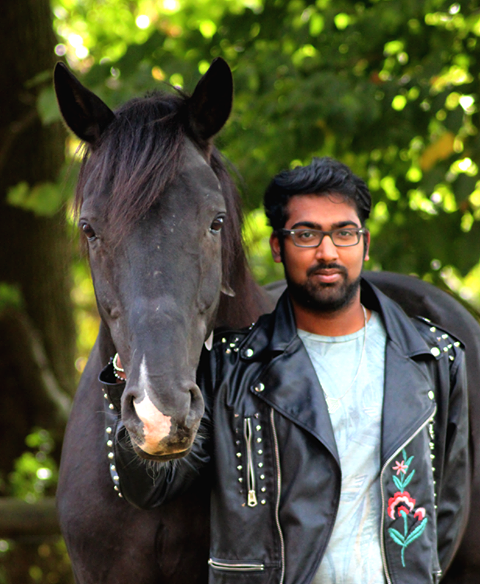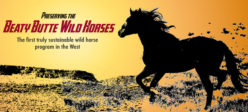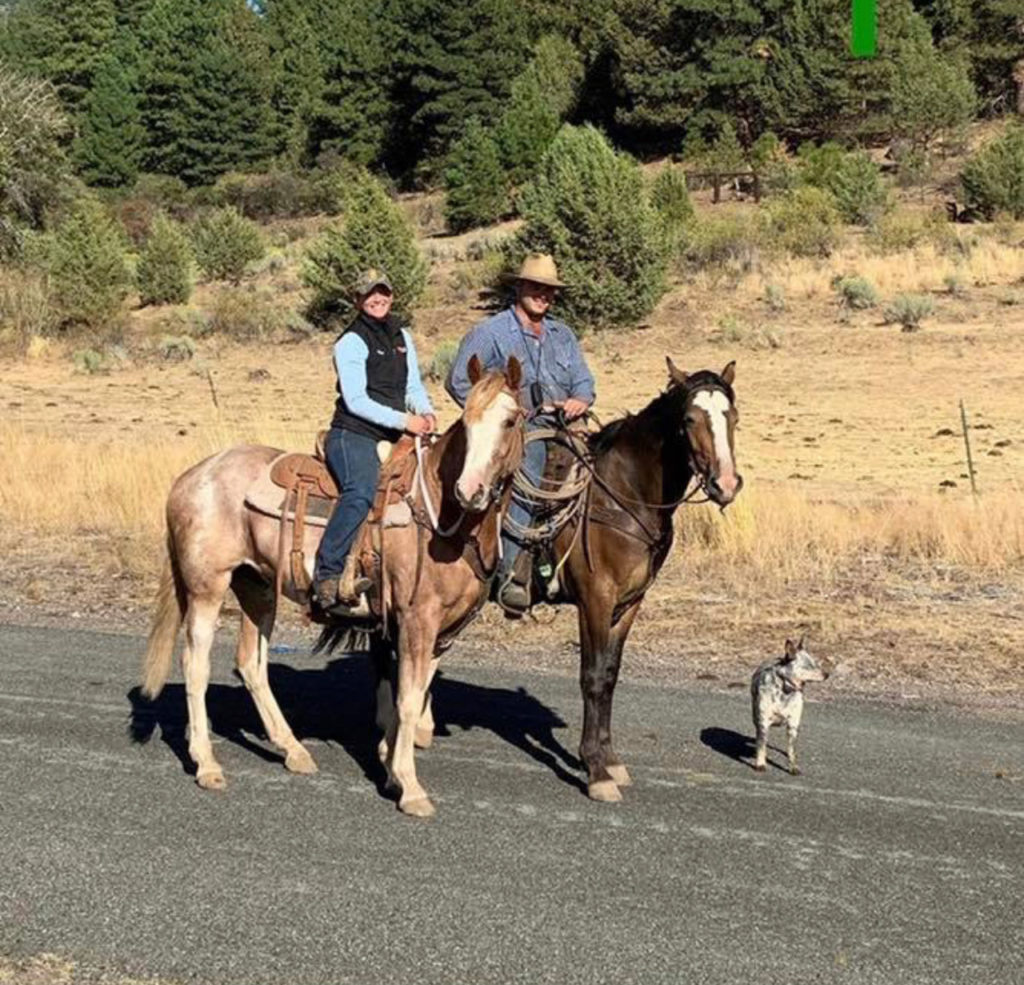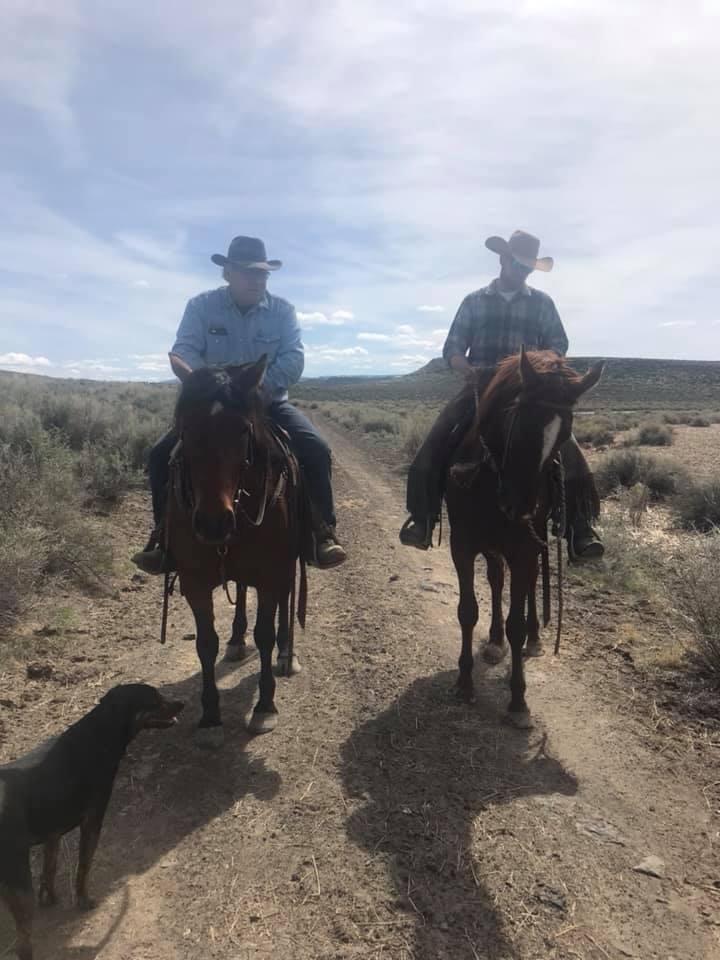
The Beaty Butte Wild Horse Training Facility, recently connected with a German Mustang group, “Der Mustang- Geschichten, informationen und Entwicklungen aus den HMAs”, who has politely provided us with information about their group and their involvement with Beaty Butte Mustangs. The following information and details has been provided by Sheetal Beckers, volunteer and founder of the MMO FB group.
We want to clarify that Sheetal and Ozlem Hamel have created a unique FB group that is not a second Mustang Makeover Group.
Sheetal’s work all started with his involvement with the Mustang Makeover Germany. The Mustang Makeover Germany was founded by Silke and Michael Strussione. They are the leaders of the Mustang Makeover Germany and started in 2017 when they adopted around 15 Mustangs that had been gathered from Beaty Butte HMA. These mustangs were adopted from a BLM facility, flown to Europe, trained with different trainers from all over Germany, and sold after the Mustang Makeover Event.
In 2018, they had their second makeover event with 22 Mustangs that had been gathered from other HMA’s with some being from Beaty Butte HMA. They used the same process as in 2017. However, this particular year, Sheetal volunteered to help the Information Center for the first time.
In 2019, Sheetal did the same volunteer job and created positive bonds with the Mustang Makeover founders and group members. Influenced by the Mustang Makeover, Sheetal and a friend, Ozlem Hanel, decided to start their own MMO group on fb.

The intention of their FB group was and continues to inform German followers. They work as volunteers in which their goal is to inform the people about wild mustangs and their living situations. Although Sheetal still supports the Mustang Makeover Events by informing viewers about where the mustangs are from, details about the event, and auction related materials, they use their volunteer time to create conversations with people.

Part of their goal when they are informing and having conversations with people, is to discuss organizations around the world that are doing positive work to support over population of mustangs, living conditions, and so forth. They translate this information into German language to help people comprehend better.
Horses that are adopted in Germany have owners that become curious and want to know more about their mustang. In order to better understand the wild mustangs and their new homes after adoption, Sheetal searches for different horses that have come to Germany. Sheetal follows the Beaty Butte Wild Horse Facility FB page, for example, and looks at the various posts of new owners who have adopted a Beaty Butte wild horse among others to gather more information. This is one of many roles Sheetal and friend do to provide the owner with more information about their horse. Sheetal follows many wild horse groups here in the US and other countries. Sheetal also communicates with advocates that work with BLM to gather information. Sheetal has been gathering information about their mustangs from several wild horse HMA’s at various locations. Researching and knowing the facts is crucial in communicating to others, expressed Sheetal.

Sheetal’s group emphasizes the importance of keeping positive relations with BLM in efforts to work together for the better of the wild mustangs. The FB group has grown to well over 200 members. The group feels it is important to connect with other groups related to wild mustangs and the HMA’s in which the horses are associated with.

Are you wondering who Sheetal Becker is and how he got started with his involvement of wild mustangs?
Sheetal was adopted at an early age from India and raised in Germany. At the young age of 6 years old, Sheetal started riding horses. He learned about mustangs after watching the movie “Spirit” when he was a boy. As he grew older, he watched other movies/shows about wild horses. He then read about mustangs. In 2012, Sheetal started following Sand Wash Basin and learned how to communicate with BLM. He studied more about the different HMA’s. He learned about on-range management in which he came across sanctuaries and adoption processes of wild mustangs. Sheetal has owned horses of his own and has ridden quite a bit.

He currently works in Germany with children from ages 2 to 6 years old by helping them get ready for school. Although Sheetal has got the “Mustang-Fever”, he is grateful for the work of his parnter, Ozlem, and the connection with the Mustang Makeover German group who has given him the opportunity to speak at a larger scale about Wild Horses and their current situations.
In communicating with Sheetal over the past week through FB messenger, there is a clear passion in bringing awareness to the German population about wild mustangs and the benefits training and adopting them out can be for not just the horses, but for the environment. Sheetal shows instant connections with wild horses and works to create a platform for conversation.

In addition to Sheetal’s involvement with wild horses, Sheetal has taken up writing in which he documents experiences people have had in working with wild horses, the different adoption processes, owning wild horses and much more. Although he is in early stages, he is inspired to eventually publish multiple books related to wild horses.

We look forward to staying in communication with our German friends and watch them grow over the years. Sheetal, thank you for your support and friendship. If you’d like to learn more about Sheetal and their group in Germany, please email us or message us on fb. You may also message Sheetal directly from their fb group. You can request to be part of their group. His groups provides up to date information about Wild Horses in Germany as well as the US.




 Arianne and Harney, 2012 Supreme Extreme Mustang Makeover Idols Reserve Champions
Arianne and Harney, 2012 Supreme Extreme Mustang Makeover Idols Reserve Champions



